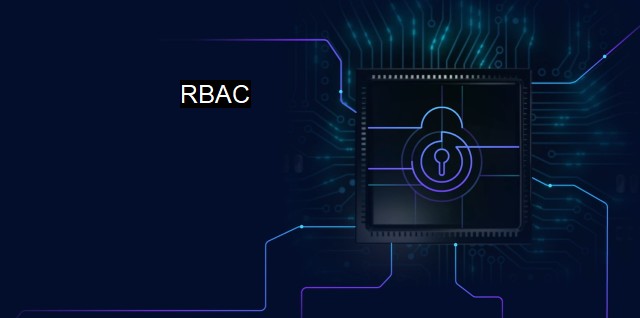What is RBAC?
Maximizing Cybersecurity: The Benefits and Principles of RBAC in Antivirus Systems
RBAC, or Role-Based Access Control, is an integral part of cybersecurity and a critical aspect of antivirus defense strategies. It's a method used in computer and network security to establish a structure based on different roles within an organization. RBAC ties roles to permissions rather than tying individual people, thereby streamlining the privilege management process significantly.RBAC's vital role cannot be understated. It fundamentally sets the basis of who in an organization can access specific resources and to what extent, thereby protecting sensitive data from malicious actors. It facilities structured security management that simultaneously provides flexibility without compromising security.
Understanding the principles of RBAC requires an understanding of its constituents, which are predominantly users, roles, and permissions. Users represent individuals who access a system or network and typically have a specific set of responsibilities related to their role in an organization. Roles refer to the formal designations given to users based on their responsibilities. A role can be associated with one or more users as needed. Then there are permissions, which refer to the approved accessible actions each role is authorized to fulfill in a system.
RBAC operates on the central theory that, based on their role, users only need access to specific data, services, or applications that directly relate to their responsibilities. it operates on the principle of "least privilege," providing users with just enough permissions required to effectively carry out their job while minimizing unnecessary access to critical functions or sensitive information, thus limiting potential security risks.
The practical implementation of RBAC can greatly streamline access management, dramatically reducing the likelihood of overlooking specific user settings, a happenstance traditionally affiliated with individually defined access frameworks.
Consider a large organization with multiple departments and levels of hierarchy: from interns and regular employees to departmental managers, top executives, and IT staff. Each user requires access to certain systems, information, apps, or resources and granting permissions on an individual basis would be laborious and susceptible to error.
With an RBAC system in operation, roles might be defined such as ‘intern’, ‘employee’, ‘manager’, etc., each with requisite permissions required to perform role-tied tasks. A new employee is assigned a role, and automatically gains necessary permissions, with no risk of overlooking an essential privilege or granting an unnecessary one.
RBAC also supports enhanced overall security and antivirus defenses in an organization. Permissions linked to specific roles reduce clandestine access and provide an additional layer of security by limiting the exposure of various system resources.
By confining access to specific areas of the system, the possibility of intrusion is lowered. Even if malware worms were to target your organization, its capacity to proliferate or inflict damage is limited because the accounts it compromises possess limited powers.
To effectively implement RBAC, organizations must commit to thorough planning that fully assesses the business’s needs. This means ensuring current job functions and hierarchies are accurately reflected in their role classifications and that roles associated duties and privileges align with the risk and maturity levels of their organization.
On a final note, it's equally critical to ensure an upkeeps plan such as regular audit and review of the role definitions and access rights is in place; as companies evolve, so to do the roles within them and their associated security needs.
Role-Based Access Control plays a pivotal role in cybersecurity and acts as a first-line defense in antivirus policy. By limiting exposure to threats and minimizing chances for organizational glitches, RBAC proves instrumental in creating a cyber-secured environment that balances operational efficacy with stringent control measures.

RBAC FAQs
What is RBAC in cybersecurity?
RBAC stands for Role-Based Access Control, which is a security model used to restrict access to resources based on the roles assigned to users within an organization.How does RBAC work in antivirus software?
In antivirus software, RBAC allows for the creation of specific roles for users within the organization. The roles dictate the level of access each user is granted to the antivirus software and the ability to perform certain functions such as scanning, updating, or configuring the software.What are the benefits of RBAC in cybersecurity?
RBAC offers numerous benefits in cybersecurity, including improved security posture by limiting access to resources on a need-to-know basis, reduced risk of insider threats, simplified management of user accounts, and better compliance with regulatory requirements.How does RBAC help in preventing cyberattacks?
RBAC helps in preventing cyberattacks by restricting access to sensitive resources to only those users who require it in order to perform their job duties. This helps to minimize the risk of unauthorized access to sensitive data or systems, and reduce the likelihood of human error or intentional malfeasance, both of which can lead to security breaches.Related Topics
Authorization Privilege Escalation Multi-Factor Authentication (MFA) Identity and Access Management (IAM) Security Policies
| | A | | | B | | | C | | | D | | | E | | | F | | | G | | | H | | | I | | | J | | | K | | | L | | | M | |
| | N | | | O | | | P | | | Q | | | R | | | S | | | T | | | U | | | V | | | W | | | X | | | Y | | | Z | |
| | 1 | | | 2 | | | 3 | | | 4 | | | 7 | | | 8 | | |||||||